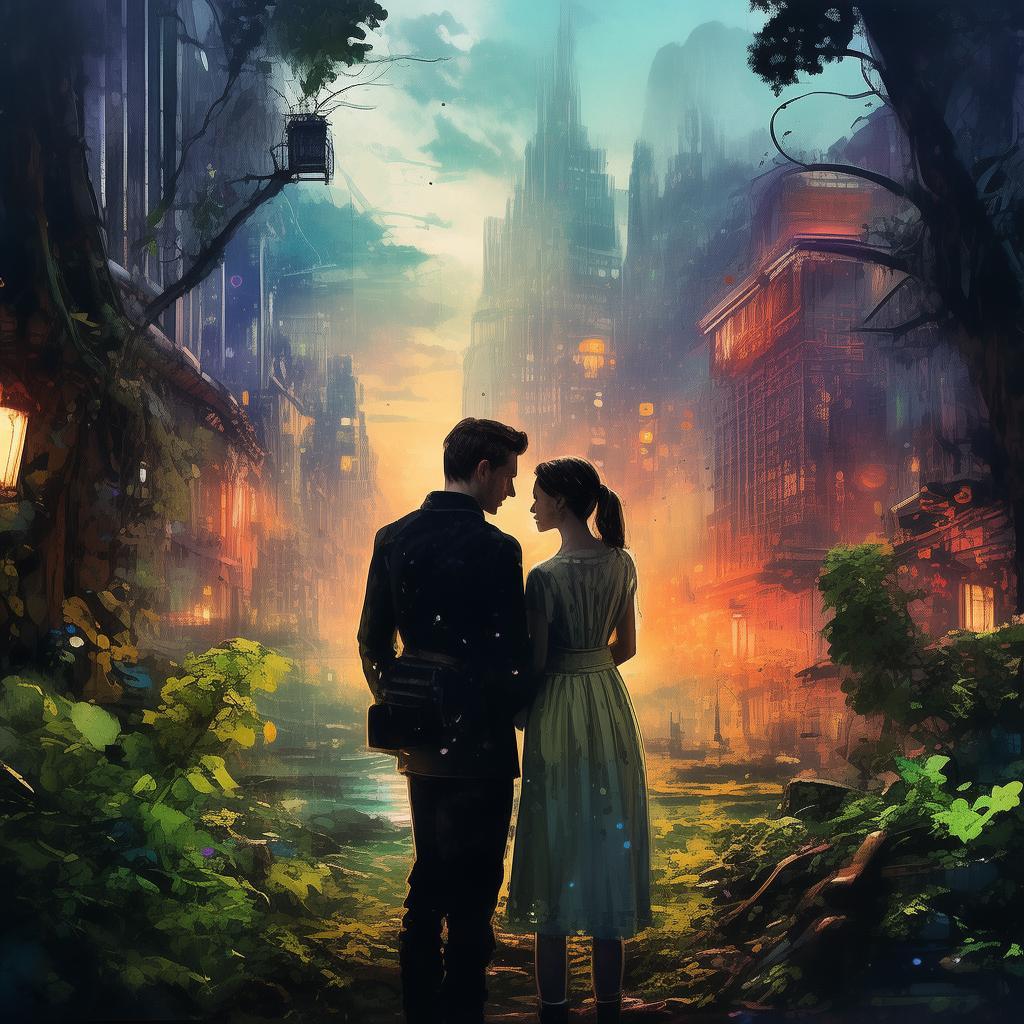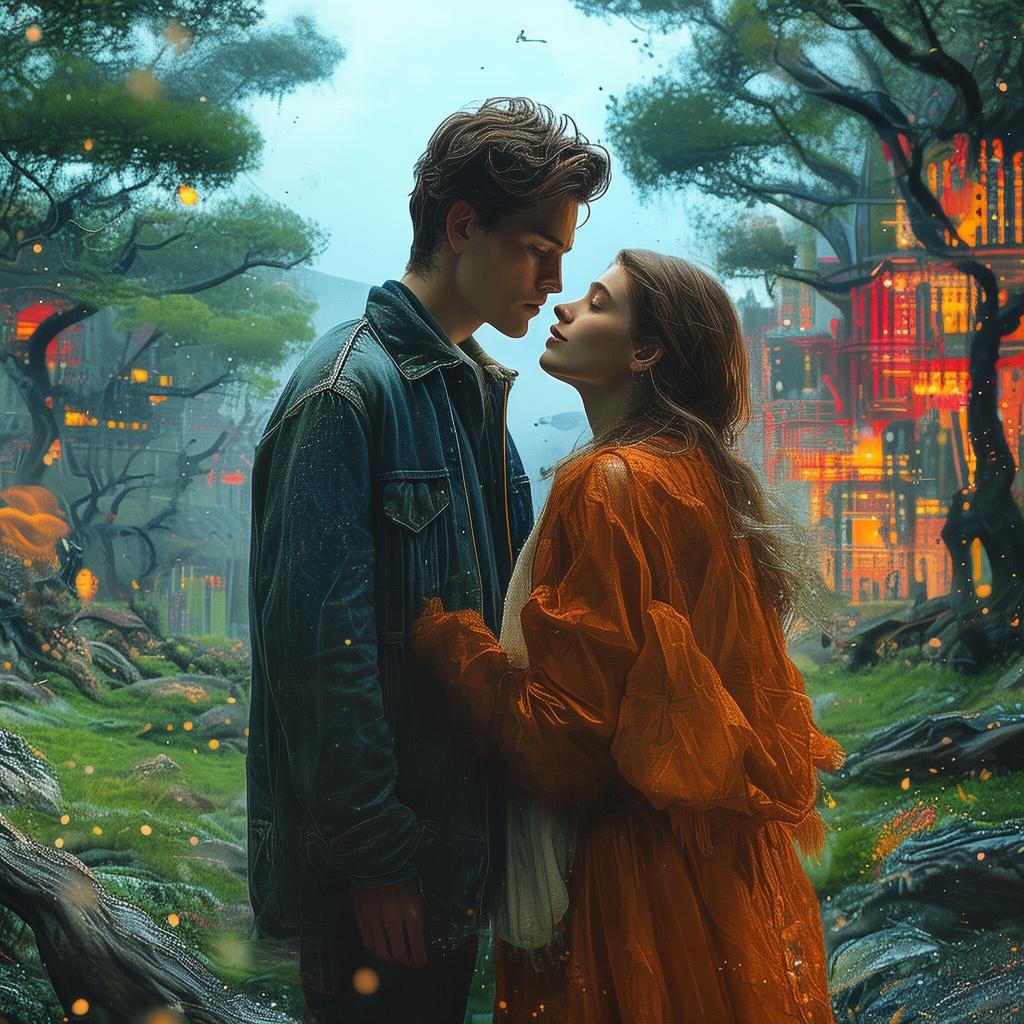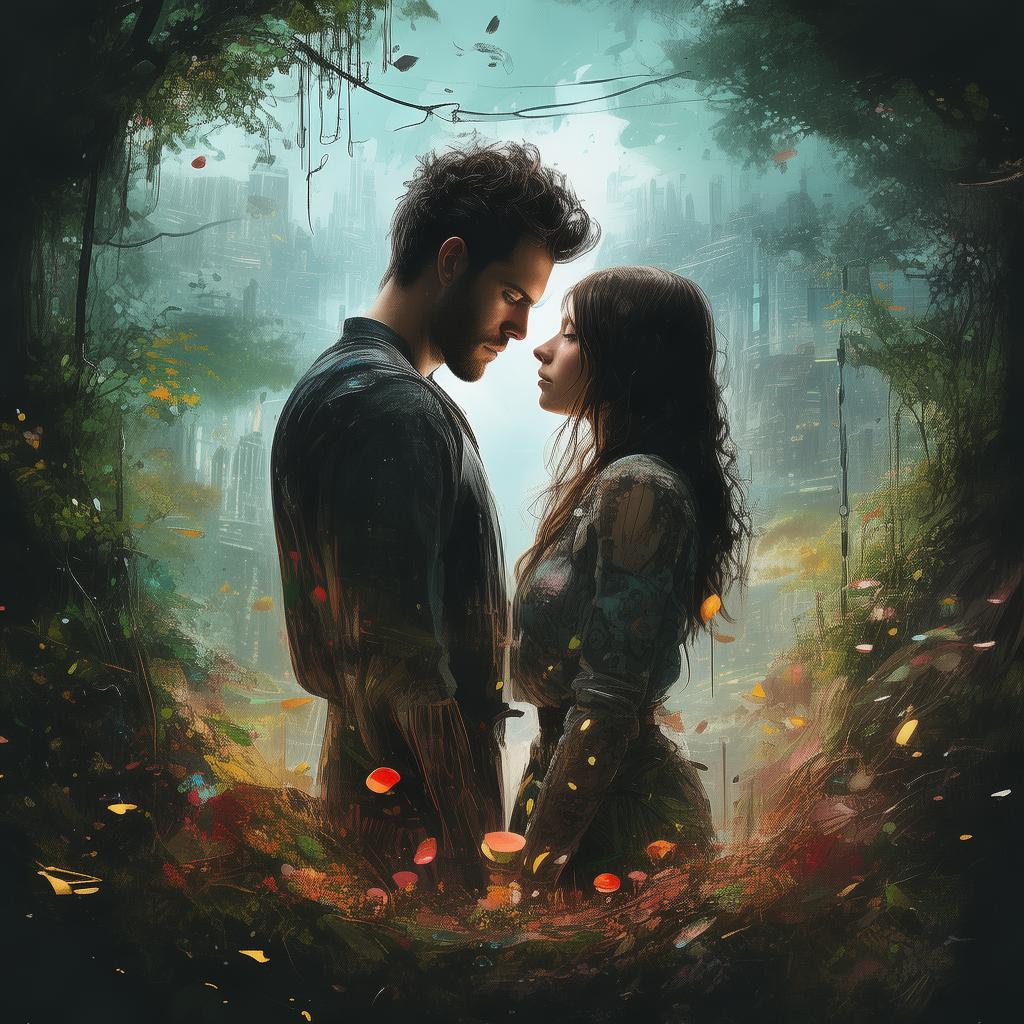The Equation of Eros: A Cartesian Romance – The Reveal
In the heart of Paris, where the scent of ancient books mingles with the whispers of the Seine, lived Élise. She was a mathematician, a creator of equations that could describe the world but not her own heart. Her life was a symphony of logic and reason, until the day she met him.
His name was Pascal, and he was an artist, a painter who could capture the most fleeting of emotions on canvas. Their first encounter was in the shadow of the Eiffel Tower, where Pascal’s brush danced across a canvas, painting the very essence of the city. Élise, captivated by his talent, approached him, her voice a mere whisper of mathematics.
“Your art,” she said, “is a language that speaks without words. Can you translate that into an equation?”
Pascal looked at her, his eyes reflecting the colors of his latest creation. “Mathematics is the language of truth,” he replied. “But love is beyond truth. It’s a feeling, a sensation that cannot be quantified.”
Élise smiled, a rare sight in her otherwise emotionless world. “I believe it can be,” she challenged. “If love is a force, perhaps we can measure it.”
And so, they began to work together, blending the precision of mathematics with the chaos of emotion. Élise poured her heart into the equation, her every thought and feeling translated into symbols and variables. Pascal, with his intuitive grasp of color and form, added layers of meaning to the abstract figures.
Weeks turned into months, and the equation grew more complex. It was a dance of numbers and letters, a map of the universe that seemed to include love. But as the equation took shape, so did the cracks in Élise’s otherwise impenetrable facade.
She began to question her own beliefs, her own understanding of love. Was it possible to quantify something so intangible? Was there a limit to the human heart’s capacity to love?
Pascal, ever the artist, saw the transformation in Élise. He understood that the equation was not just a mathematical construct; it was a reflection of their relationship. It was a testament to their love, to the depth of their connection.
One evening, as the sun dipped below the horizon, casting a golden glow over the city, Pascal approached Élise with a piece of canvas in hand. It was a portrait of her, her eyes reflecting the complexity of the equation they had created.

“Look,” he said, “this is what love looks like to me. It’s not just a number, not just a force. It’s a person, a being, a soul.”
Élise’s breath caught in her throat. She had never seen herself like this, not as a subject of love but as its object. She looked at Pascal, her heart pounding in her chest.
“I think,” she said, “I may have been wrong. Love can be quantified, but it cannot be contained. It is infinite, like the universe itself.”
Pascal nodded, his eyes meeting hers. “Then let us embrace the infinity of our love, Élise. Let us be the equation that defines us, the equation that is us.”
And with that, they stepped into the unknown, their equation as their guide. They knew that the road ahead would be fraught with challenges, but they also knew that their love would withstand them all.
As the days passed, the equation continued to evolve, a living, breathing thing that mirrored their relationship. It became a symbol of their love, a reminder that in a world where everything could be quantified, love was the one thing that defied measurement.
One night, as they sat in the quiet of their apartment, Élise turned to Pascal. “What do you think will happen when we find the final form of our equation?”
Pascal smiled, his eyes twinkling with mischief. “I think,” he said, “that when we find the final form, we will find the answer to the most important question of all. What is love?”
Élise laughed, a sound that was both foreign and familiar to her. “I think,” she replied, “that the answer will be written in the stars, in the rhythm of the heart, and in the equation that we have created together.”
And with that, they looked at each other, their eyes filled with the promise of a future that was as infinite as the equation they had created. They knew that the equation was not just a mathematical construct; it was a testament to their love, a love that defied all boundaries and limitations.
As the night deepened, the equation continued to evolve, a living, breathing thing that mirrored their relationship. It became a symbol of their love, a reminder that in a world where everything could be quantified, love was the one thing that defied measurement.
In the end, the equation was not a final form but a journey, a continuous exploration of the infinite possibilities of love. And as they continued to walk that journey together, Élise and Pascal realized that the true power of their equation was not in the numbers, but in the love that they shared.
And so, they lived, their love a testament to the fact that sometimes, the most complex equations are solved not by the mind, but by the heart.
✨ Original Statement ✨
All articles published on this website (including but not limited to text, images, videos, and other content) are original or authorized for reposting and are protected by relevant laws. Without the explicit written permission of this website, no individual or organization may copy, modify, repost, or use the content for commercial purposes.
If you need to quote or cooperate, please contact this site for authorization. We reserve the right to pursue legal responsibility for any unauthorized use.
Hereby declared.









